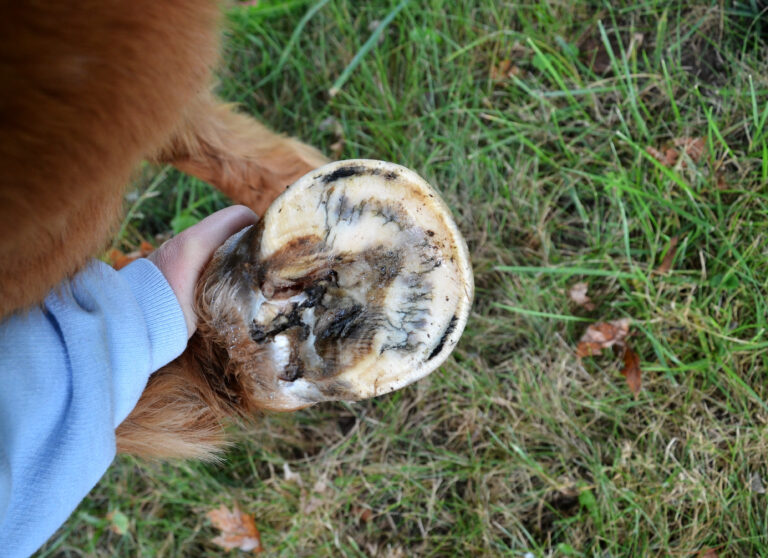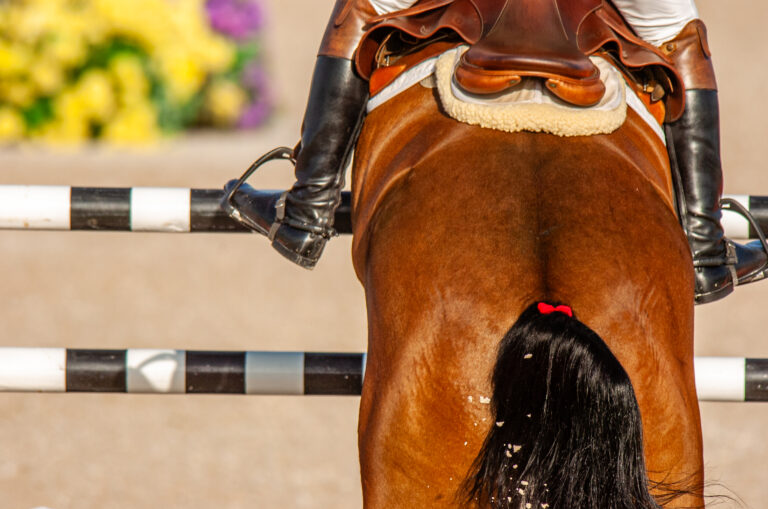Q: Can my girth be too tight? Can it interfere with my horse’s performance or hurt him?
HILARY CLAYTON, BVMS, PhD, DACVSMR, MRCVS
A: A tight girth can certainly be uncomfortable for your horse and can interfere with performance, especially in sports that require a high level of cardiovascular fitness. During exercise, your horse’s chest expands every time he inhales. The faster he moves, the more his chest must expand because he needs to get more oxygen to his working muscles. A too-tight girth can limit this function.

In some horses, an overtightened girth can also pull the saddle forward. We call the area in front of the expanded part of the horse’s chest “the girth line.” Because of the girth line’s smaller circumference, the girth tends to migrate to it, no matter where you position the girth. In horses whose girth line is situated far forward—just behind their elbows—the girth will tend to slide forward. If the billet straps are being pulled forward by the girth rather than hanging vertically, the saddle will likely be pulled forward onto the horse’s shoulders, especially if the girth is overtightened. A differently constructed saddle with a point billet that is situated further forward may be helpful in these horses.
Studies show that girth tension increases as a horse breathes in and decreases as he breathes out, with the highest girth tensions being recorded during galloping. Scientists measure tension in the girth in newtons, but since most of us don’t know what a newton feels like, I’ll make a rough conversion into pounds. If the girth is tightened to 22 pounds when the horse is at rest, the girth tension during inspiration (breathing in) when he’s galloping increases to around 48 pounds. This may reduce the expansion of his rib cage and interfere with his work capacity.
It is recommended, therefore, that girth tightness be no more than 22 pounds when the horse is standing still. At this tightness the girth will be snug against your horse’s body but you will still be able to slide three fingers underneath it.
The challenge is to get the girth tight enough to hold your saddle securely in place without making it so tight that it interferes with your horse’s mechanics or pulls the saddle forward. There is no hard, fast rule for this. The shape of your horse’s back plays a role; generally horses with well-defined withers stabilize the saddle better, so they require a less tight girth than those with more rounded withers. The design of the saddle is also a factor, especially the length of the tree points and the vertical parts of the flaps, which help to stabilize the saddle. Longer tree points and flaps tend to be more stable, but make sure they are not restricting the movements of the shoulder. A well-balanced rider has a stabilizing effect on the saddle, too, whereas a poorly balanced rider may allow the saddle to slip to the outside on turns.
The size and type of your girth can be influential as well. When choosing a girth, evaluate its position and the position of the buckles on your horse’s chest. The highest pressure under the girth occurs just behind his elbow. Avoid using a girth that fits closely behind the elbow. Consider buying a girth that is contoured in this area (designed so it curves away from the elbows). When using a contoured girth, make sure it is the correct size and attached to the saddle billets evenly on both sides, so that the parts that are cut back are at the level of your horse’s elbows.
In racehorses, the use of a girth that is elastic throughout its entire length has been proven to give some protection against overtightening. A girth that is elasticated only at the end(s) is unlikely to offer similar protection, although it does offer some room for expansion provided the girth is not adjusted so tightly that the elastic is fully stretched.
When you tack up your horse, attach the girth loosely at first, then tighten it gradually before mounting. After a few minutes in the saddle, it’s usually possible to tighten the girth a little more because your fluffy saddle pad has flattened down and, if your horse puffed himself up when the saddle was being put on, he will have unpuffed after being ridden for a short time. Be careful not to shift your weight in the saddle when adjusting your girth while mounted, as this can pull the saddle out of place.
To get an idea of how tight your particular girth needs to be given all the variables I mentioned above, check the position of your saddle now and then throughout your ride. If it tends to slip to one side or backward toward your horse’s tail, the girth may need to be a hole tighter. On the other hand, if your saddle never budges, try the girth a hole looser. Make these adjustments gradually and never risk riding with a girth so loose that the saddle might shift dramatically and jeopardize your safety.
Hilary Clayton, BVMS, PhD, DACVSMR, MRCVS, is a leading expert in equine biomechanics who has transformed the sporthorse world’s understanding of the performance and soundness of equine athletes. She grew up in England and earned her veterinary degree from Glasgow University before going on to research and teach at veterinary colleges in the United Kingdom, the Netherlands, Canada and the U.S. From 1997 to 2014, she served as the Mary Anne McPhail Chair in Equine Sports Medicine at Michigan State University’s College of Veterinary Medicine. Her work has included studies of bitting, saddle-fit biometrics, kinematics and conditioning, with an emphasis on the prevention and treatment of lameness. Also an experienced eventer, show jumper and dressage rider, Dr. Clayton is a U.S. Dressage Federation bronze, silver and gold medalist and a certified equestrian coach in the U.K. and Canada.
This article originally appeared in the November 2015 issue of Practical Horseman.











